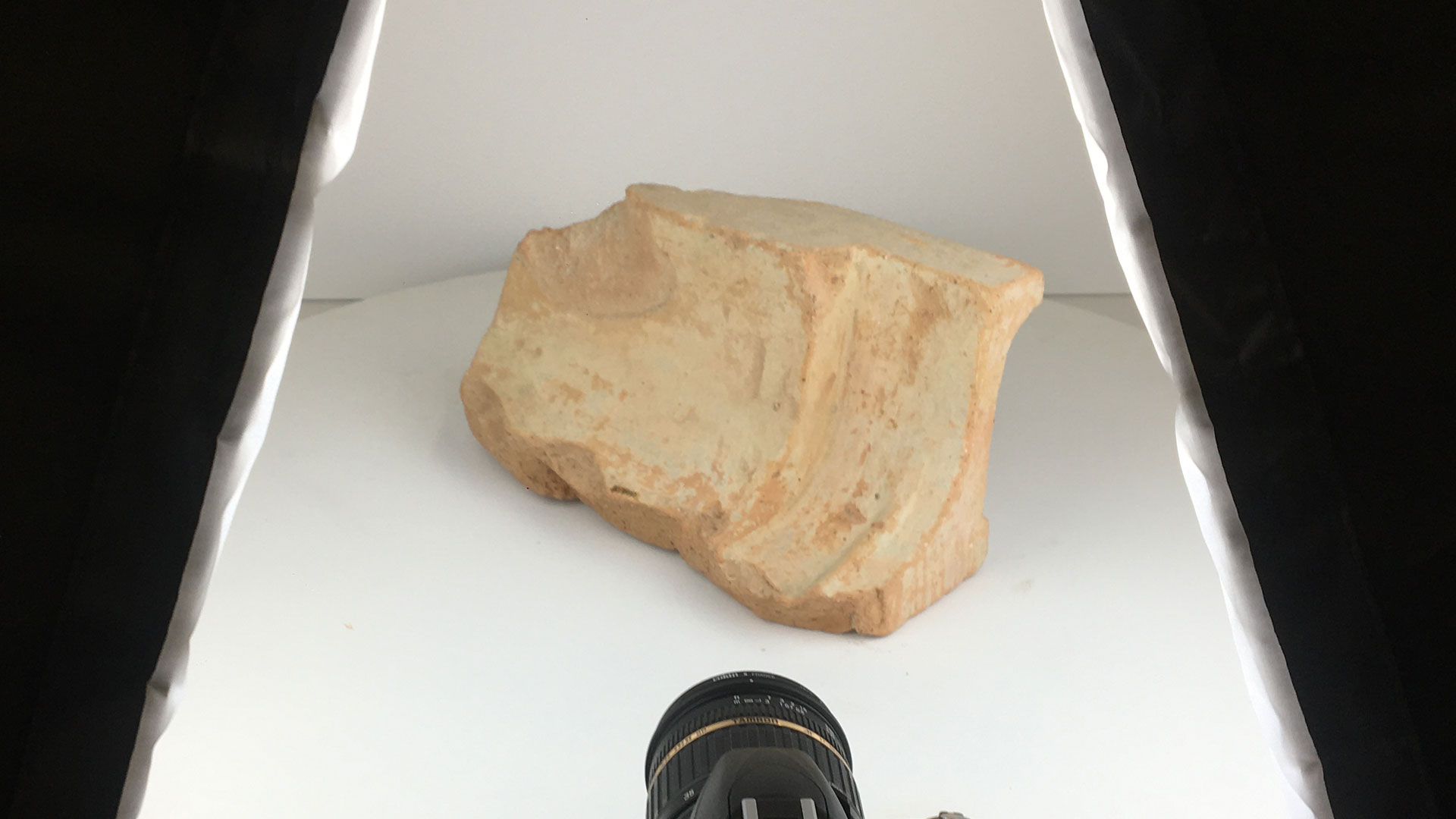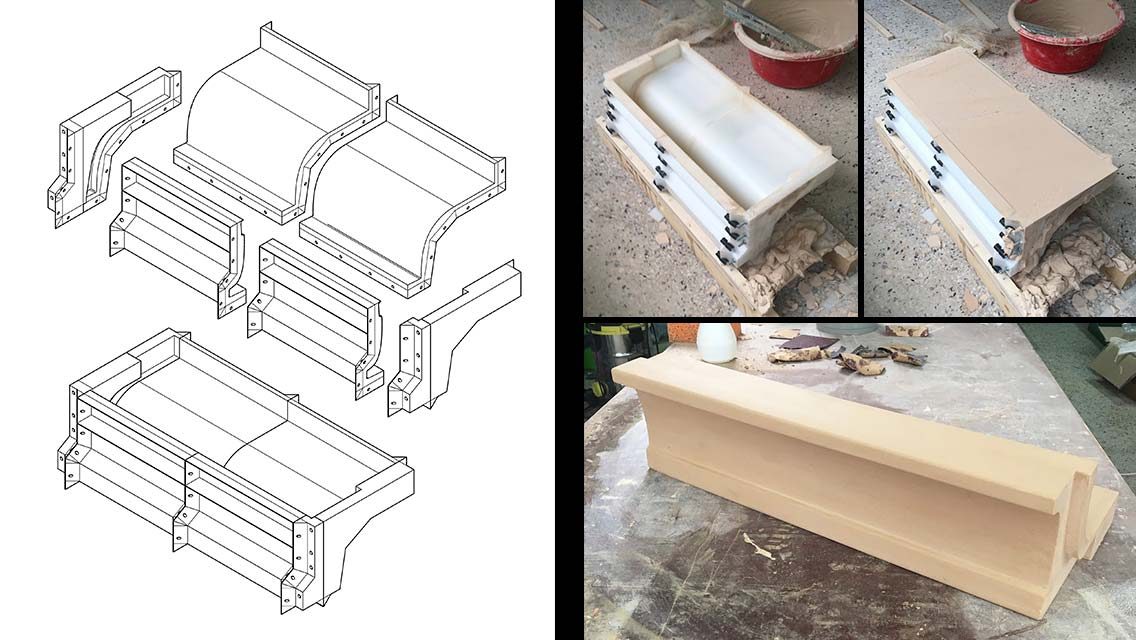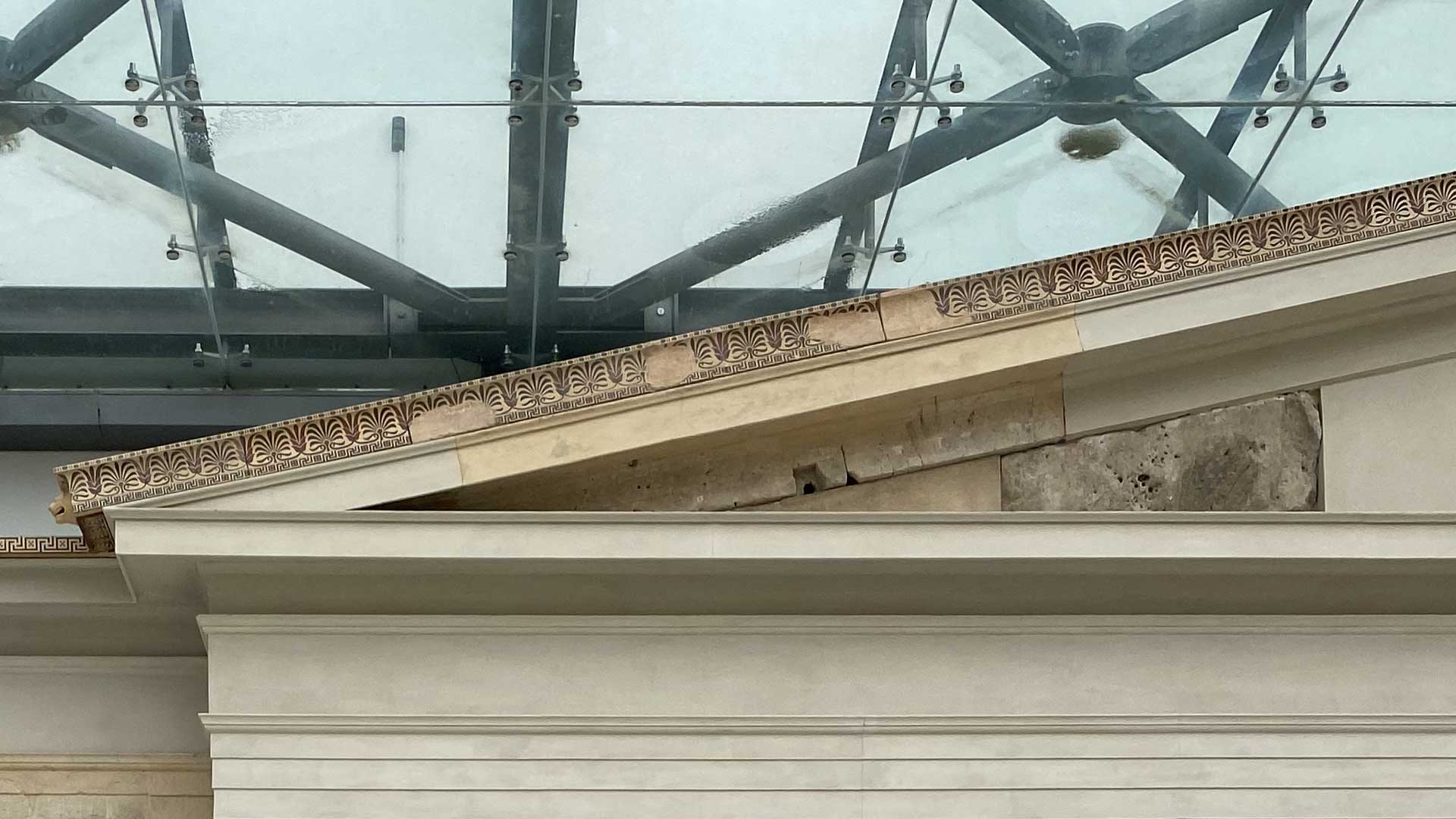
Pediment Sima
3D-Printed Mold and Plaster Casts
The project involves the meticulous restoration and replication of ancient architectural elements and consists of a) the 3D scanning of an ancient sima, b) the production of modular, precision-engineered molds via 3D printing, and c) the casting and fabrication of 14 high-fidelity plaster simas. These architectural components are installed at the terminus of the pediment on the facade of the Palace of Aigai, contributing to the structural and aesthetic integrity of the restored facade.
a) The original sima was digitally captured using advanced photogrammetry techniques, resulting in a highly detailed and accurate 3D model. This model was carefully adapted to meet the restoration design requirements, ensuring that it aligns seamlessly with other architectural elements such as the simas, acroteria, and cornices of the facade. Adjustments to the digital model were made to account for historical context and structural compatibility.
b) The modular mold was designed based on the finalized 3D model, prioritizing precision, durability, and ease of assembly. It is composed of six distinct components fabricated from Polylactic Acid (PLA) using Fused Deposition Modeling (FDM) technology. PLA was selected for its excellent resolution and stability during the molding process. The components are designed to interlock securely using metric screws, ensuring a robust and reliable structure capable of repeated use.
c) The 14 plaster simas are cast using this modular mold, with each cast requiring approximately 12 kilograms of high-quality plaster mixed with pigments tailored to match the historical material properties, as specified by the conservation team. The mold is also utilized for producing supplementary casts to restore missing sections of existing ancient simas, ensuring continuity between the original and restored elements. This dual-purpose application underscores the precision and versatility of the mold design, critical to achieving an authentic and cohesive restoration.
a) The original sima was digitally captured using advanced photogrammetry techniques, resulting in a highly detailed and accurate 3D model. This model was carefully adapted to meet the restoration design requirements, ensuring that it aligns seamlessly with other architectural elements such as the simas, acroteria, and cornices of the facade. Adjustments to the digital model were made to account for historical context and structural compatibility.
b) The modular mold was designed based on the finalized 3D model, prioritizing precision, durability, and ease of assembly. It is composed of six distinct components fabricated from Polylactic Acid (PLA) using Fused Deposition Modeling (FDM) technology. PLA was selected for its excellent resolution and stability during the molding process. The components are designed to interlock securely using metric screws, ensuring a robust and reliable structure capable of repeated use.
c) The 14 plaster simas are cast using this modular mold, with each cast requiring approximately 12 kilograms of high-quality plaster mixed with pigments tailored to match the historical material properties, as specified by the conservation team. The mold is also utilized for producing supplementary casts to restore missing sections of existing ancient simas, ensuring continuity between the original and restored elements. This dual-purpose application underscores the precision and versatility of the mold design, critical to achieving an authentic and cohesive restoration.
The photogrammetry process produces a highly accurate 3D representation of the ancient element, serving as the foundation for precise mold design and cast production throughout the restoration workflow.


The casting process utilizes an assembled 3D-printed mold, designed to enhance accuracy, consistency, and repeatability. This approach ensures precise detailing in every cast and allows for efficient replication of complex geometries across multiple iterations.
Prior to installation, the casts are hand-painted with patterns derived from the original ancient architectural elements, as documented during the archaeological site analysis. This process ensures historical authenticity and visual harmony with the restored structure.

